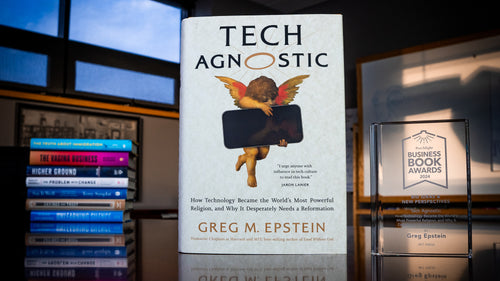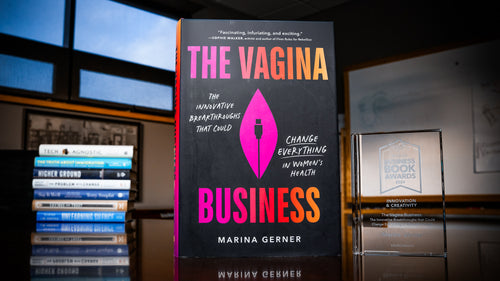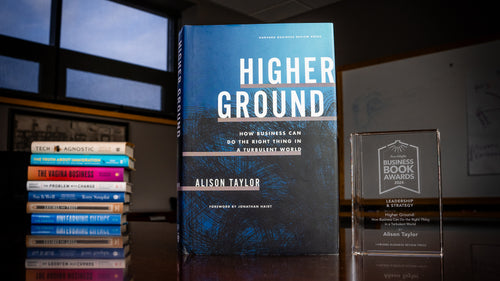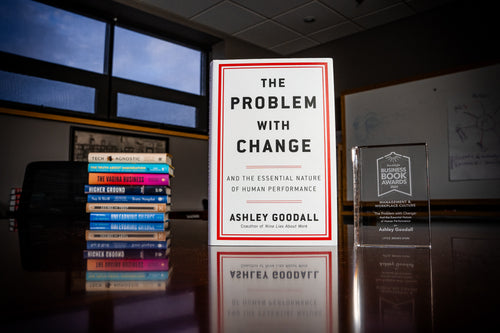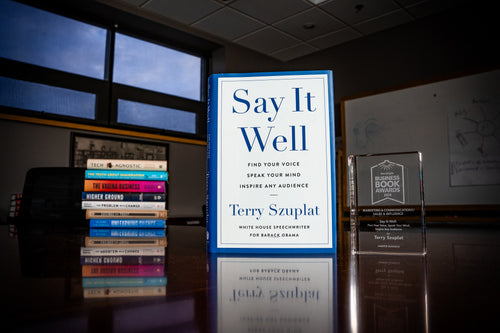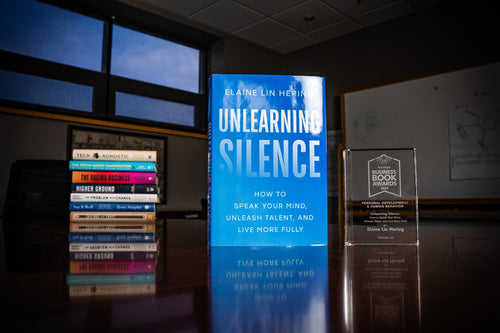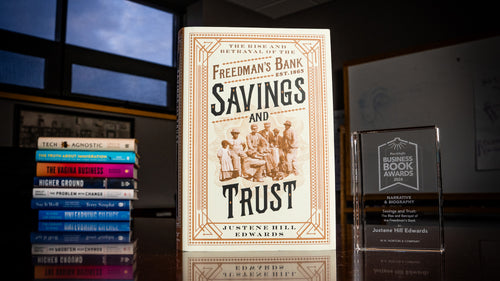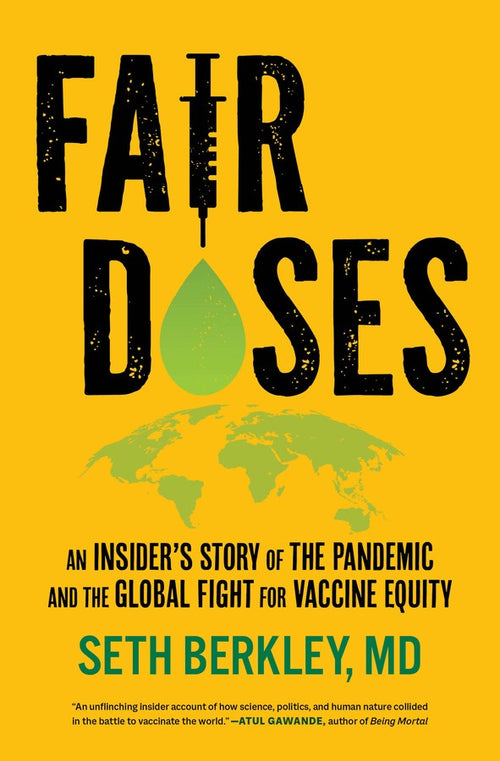The Right Call | An Excerpt from the Leadership & Strategy Category
As Porchlight's Managing Director Sally Haldorson recently wrote:
I … found reading The Right Call refreshing because in her exquisitely written and well-researched effort to “describe the athletic heart,” [Sally Jenkins] tells us stories of ambition and rigor and intense investment of time and effort—how humans push themselves to succeed for the thrill of competition, the ecstasy of winning, and the love of the game. There are some people who really do live to work, as many athletes do, and get tremendous satisfaction and purpose doing so.
The following excerpt comes from Chapter One, and explains why turning to sports helps our understanding of leadership and strategy in other arenas.

Stand with Kansas City Chiefs coach Andy Reid on the sideline, January 19, 2020. His team trails by 10–0 to the Tennessee Titans with a trip to the Super Bowl at stake. The men on the field exhale in plumes, and the crowd noise is a steady rumble from seventy-six thousand fans pulsing distractingly in their team colors of aorta red, as they wait for Reid to make a call. The tension mounts as the last strip of sun sinks over the stadium rim into the cold dusk. Through it all, Reid calmly studies a laminated play card, like he’s the only unanxious one in the arena. Like he’s sharpening a pencil.1
Reid has a decision to make. It’s fourth down, with two yards to go, on the Titans’ twenty-eight-yard line. The nature of football is that the pressure ratchets on every sequential play. A team has just four tries to move ten yards, or the other team takes possession of the ball. Thus, the calculus alters, and so does the pressure.
Reid has two options, with different magnitudes of risk. He can opt to have his team kick a three-point field goal, which is safe and reliable. But it’s also a concession that leaves a taste like cold oatmeal. Or he can go for it, try to punch the other team in the gut with a play that will keep the drive alive for a touchdown and the greater reward of seven points. The praise or blame for what happens next will fall squarely on Reid, and his decision will be perceived as a measure of his courage, recklessness, wisdom, and personality all at once.
[…] He is at a juncture in his career that might give a man pause. He’s sixty-two years old, and he knows what it is to be fired. He’s got a record of 13-14 in the NFL playoffs, and back in 2012 the Philadelphia Eagles relieved him of head coaching duties over his failure to win a championship.
The Chiefs could badly use some momentum. They are tantalizingly close to a first down—they just need two more yards. But that very closeness complicates things. Fourth down and “short” situations (meaning less than three yards) are torturously problematic statistically. According to NFL data analytics, if coaches would “go for it” on fourth and short more often they would be rewarded with a higher probability of victory.2 But the sheer fluidity of the game, variables of player behavior and reactiveness, can make fool’s gold out of probabilities.3 Coaches balk, and with good reason. Men are not data. They can fail to execute. This uncertainty can immobilize a coach, and so can fear of repercussions from critics. Kicking a field goal might not maximize Reid’s chance of winning a game, but “it could actually maximize his chance of keeping a job,” observes the NFL’s chief of data Michael J. Lopez, a professor of statistics at Skidmore College.4
As former NFL coach Bill Cowher has remarked, “There is so much more involved with the game than just sitting there, looking at the numbers, and saying, ‘Okay these are my percentages, then I’m going to do it this way,’ because that one time it doesn’t work could cost your team a football game, and that’s the thing a head coach has to live with.”5
Suppose Reid declines to kick the three-point field goal and then fails to get the first down? What if three points is the final margin of defeat? What might people say?
Most formal studies of leadership suffer from a fundamental weakness: you can’t watch a CEO in live action. Men and women in suits sit sequestered in hermetically sealed towers making deliberations that are largely invisible. They are absent from us. They sweat, to be sure. But they and their experiences are not especially accessible.
Only rarely do we glimpse their process. In the classic business textbook The Functions of the Executive, author Chester I. Barnard explained this dilemma: “Not the least of the difficulties of appraising the relative merits of executives lies in the fact that there is little direct opportunity to observe the essential operations. … They must be largely inferred . . . from symptomatic indications of roundabout character.”6 Coaches and playmakers make decisions in real time, right before our eyes. “Quick ones, hard ones,” says former Duke football coach David Cutcliffe. “Decisions, that’s where the magic is.”7 It’s their entire craft. What seem like split-second reactions by even the most impulsive-seeming champions are really micro-decisions, the result of years of trial-and-error assessments, about when to take a shot, if to take it, how to find the opening for it. They not only make calls constantly; they also have the vital ability to persuade others to execute those decisions with similar energy and conviction. In fact, an essential part of their job is the relaying of their vision to their proxies. They bridge the gap between abstract leadership study and practical application. How coaches and athletes act under the stresses of competition can show us how to become more skilled at enacting deliberate, intentional action in our own spheres.
A ball flies through the air, hands are outstretched, the clock ticks, the audience gasps, and careers can be made or broken. Yet athletes and coaches manage to not be paralyzed by those consequences. They decide and they act. It’s a breathtakingly instructive thing to watch.
Somehow Reid cuts through it all: the noise of the crowd, the potential consequences for his career. He makes the call. He murmurs into a headset, and suddenly everything shifts into organized flights. Reid and the Chiefs are going for the first down—and with an audacious play. Though they need just two yards, Reid signals a pass. Quarterback Patrick Mahomes rears back and delivers a rope line of a ball toward tight end Travis Kelce.
Two defenders close fast on Kelce. He catches it—they hit him. He holds on.
First down.
The Chiefs go on to score a touchdown and cut the lead to 10–7. Which triggers a complete reversal in the momentum, and the mood in the stadium. By the time the clock expires, the Chiefs have a comfortable 35–24 victory, to earn a trip to the Super Bowl.
After the game Reid muses on that crucial fourth-down play. It got his team “going in the right direction,” he says. Asked if the call was a difficult one, he answers simply and succinctly:
“No, it wasn’t,” he says.
It wasn’t?
It wasn’t. Not for him. Because he knew what he was doing, and why.
We, too, can learn how to make the “right call” under pressure. All of us face uncertainty in our work lives. We report for duty every day in our neckties, work boots, or heels, to face unknown and unlooked-for challenges, problems of “novelty, complexity and open-endedness,” as the renowned management-studies academic Henry Mintzberg observes. Still, we show up. That itself is a decision, and not always an easy one.8
Though we’re hardly aware of it, we, too, make scores of choices every day. Athletes and coaches show us how to drag ourselves from this semiconscious state into more explicit purpose.
What constitutes a good decision? Mintzberg defines it as the ability to sort through “dynamic and shifting factors to make a specific commitment to action.”9 As Mintzberg points out, there are many different types of decisions, from “opportunity” decisions to “crisis” decisions. Just as Andy Reid’s predicaments change depending on the down, our own situations vary and so do the stakes. Simply categorizing decisions with more awareness helps us make better ones, and arrive at solid, self-aware, and adaptable judgments amid tremendous uncertainties.10
Elite performers are highly methodical in their processes, precisely because they deal in fluid situations. Consistent champions don’t just drift through the circumstances of their day; everything they do is deliberate. What you come to notice is that they share some commonalities in how they go about their business, across all endeavors. There is a reason why NFL Hall of Famer Peyton Manning is as good at television as he was at quarterbacking.
“Decision-making is a mechanism, and it can be trained like anything else,” big wave surfer and innovator-entrepreneur Laird Hamilton contends. “It’s like a muscle, where the more you do it, the better you get at it. And part of being good might just be your willingness to make a decision at all.”
Excerpted from The Right Call: What Sports Teach Us about Work and Life.
Copyright © 2023 by Sally Jenkins.
Reprinted with permission of Gallery Books, an imprint of Simon & Schuster, Inc.
All rights reserved.

